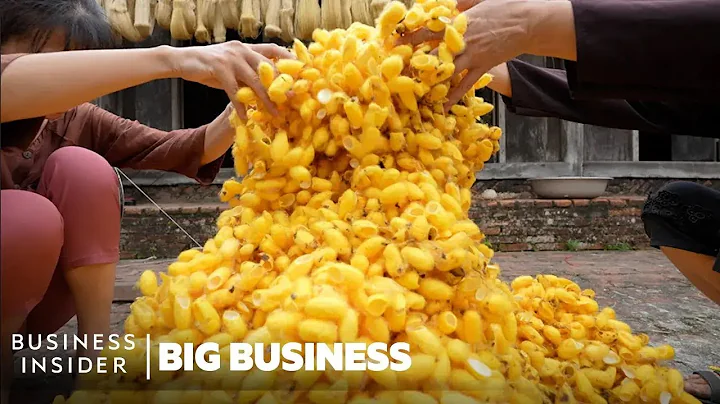This year’s textile market is difficult! Disaster! Disaster!
After experiencing a difficult 2021, many textile people are looking forward to the market getting better in 2022. However, the limited time has poured cold water on the textile people. More than half of 2022 has passed, and it is gradually discovered that business in the textile industry is getting more and more difficult!
From crazy capacity expansion, capacity transfer, and blind production, today there is a huge excess of production capacity. It is difficult for weaving manufacturers to balance production and sales, and the textile market is going downhill.
Coupled with the ups and downs of the foreign trade environment, it is difficult to have direct benefits. The textile market lacks upward momentum, and companies are more or less under financial pressure. In addition to the blind expansion of enterprises themselves, the difficulty in receiving orders also puts enterprises under great pressure.

A breakdown of the bankrupt enterprises in the textile industry in the past six months:
html On December 23, the court issued a ruling on Jiaxing Jiayun Textile Platemaking Co., Ltd. (2021) Zhejiang 0411 No. 12 declaring the debtor bankrupt.
html On December 25, the People’s Court of Keqiao District, Shaoxing City ruled to accept the bankruptcy liquidation of Shaoxing County Canpu Textile Co., Ltd.
html On March 8, the Hotan Prefecture Intermediate People's Court hosted the first creditors' meeting of Xinjiang Hotan Cotton Textile Mill. The bankruptcy administrator, legal representative, creditors, etc. of Hotan Cotton Textile Mill attended the meeting.
html On March 24, the Xiaoshan District People’s Court of Hangzhou ruled to terminate the bankruptcy proceedings of Hangzhou Yenan Textile Co., Ltd.
html On April 1, Tianmen Court held the first creditors meeting in the bankruptcy liquidation case of Hubei Shengfang Chemical Fiber Co., Ltd. through an online conference through the National Enterprise Bankruptcy and Reorganization Case Information Network.
html On April 6, Lu'an Aikewei Textile Co., Ltd. held an auction through online bidding on the Zhongbai platform at 9:30 am.
html On April 7, Jiangxi Zhongfang Jinran Textile Co., Ltd. went bankrupt and liquidated.
html On April 8, Guangzhou Intermediate People’s Court of Guangdong Province ruled to declare Guangdong Textile Import and Export Guangtong Trading Co., Ltd. bankrupt.
html On May 23, Shangyu Minsheng Printing Co., Ltd. auctioned the industrial land, factories and ancillary facilities and other properties held under its name.
html On May 25, a bleaching and dyeing company in Shunde, Foshan issued a "Notice on the Suspension of Production and Closure" to inform all employees that due to various factors, the company's production and operations have suffered annual losses in recent years. After careful consideration, it was decided to officially close the company on June 25, 2022. Suspension of production and closure of operations.
html On May 27, Shaoxing Dadi Baile Printing and Dyeing Co., Ltd. auctioned all its assets in the Jiuqiqiu area of tidal flats in Keqiao District.
html On June 9, the Yiwu People's Court issued an announcement: Yiwu Detai Textile Co., Ltd. was bankrupt and liquidated.
html On June 10, the Siyang County People’s Court ruled to accept the bankruptcy liquidation of Siyang County Blue Sky Textile Co., Ltd.
html On June 10, Manas County Shunda Chemical Fiber Co., Ltd. went bankrupt and was auctioned on a public platform.
html On June 13, the Taihe County People’s Court issued an announcement declaring Taihe County Huafen Textile Co., Ltd. bankrupt.
html On June 15, Foshan Textile Industry Company was publicly auctioned on the Jingdong bankruptcy liquidation platform.
html On June 17, Jiangsu Xiangshui County Zhongrui Textile Co., Ltd. applied for compulsory liquidation and bankruptcy reorganization.
On June 22, Dongsheng Carpet Group and Rizhao Dongsheng Carpet Co., Ltd. transferred their claims on Alibaba platform .
html On June 22, the ruling ended the bankruptcy proceedings of Guangdong Textile Import and Export Cotton Fabrics Co., Ltd.
html On June 29, Foshan Sanshui Shengjindian Textile Printing and Dyeing Co., Ltd. went bankrupt and auctioned all machinery and equipment.
... ...
The above statistics by the editor are only bankrupt and closed companies in the first half of this year. In fact, there are more.
Comprehensive analysis of the reasons for the collapse of the textile industry mainly includes the following points:
First, after three years of epidemic, it is difficult for enterprises to survive.
Second, in recent years, my country's environmental protection requirements have become higher and higher. Plastic packaging , as an industry with high pollution and high energy consumption, has been greatly affected. This impact includes difficulties in obtaining financing from banks and other financial institutions, and some companies have even been shut down directly.
Third, small and medium-sized enterprises have difficulties in financing their operations.
Fourth, homogeneous competition is too fierce, profits are becoming increasingly diluted, and little money can no longer be made.
Fifth, the COVID-19 epidemic has broken out in many places this year, shutting down the economy in many parts of the country and causing depression in all walks of life. However, wages and rents have to be paid continuously, which has led to the depletion of cash flow of small and medium-sized enterprises.
Many small and medium-sized textile factories have closed down this year. The main reason is that due to the impact of the epidemic, many companies cannot survive. However, we must also see that environmental protection, high rents, homogeneous competition, weakening domestic demand, blocked exports, broken capital chains, financing difficulties and other reasons have made the survival of small and medium-sized enterprises even worse.
Therefore, if the business and development environment of the enterprise can be improved, the probability of the enterprise's survival may be higher. We must know that 80% of domestic employment problems must be solved by small and medium-sized enterprises. If small and medium-sized enterprises close down one after another, "stabilizing employment" will be impossible to talk about.
The "wave of bankruptcies" is not the result we want to see, but the emergence of the wave of bankruptcies is like a blow to the head, waking up the domestic textile industry and telling domestic textile companies that we have reached an extraordinary period. If we continue to blindly expand, we will still be in trouble. If we use cheap products to seize the market, what will eventually greet us will be "destruction". Therefore, the domestic textile industry must learn to think and learn to be flexible, so that it can create another "sky" in such a harsh environment.
Editor: Chemical Fiber State New Media Team





















